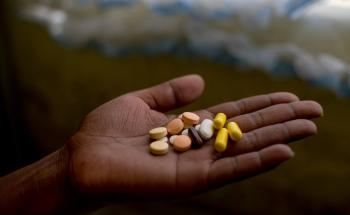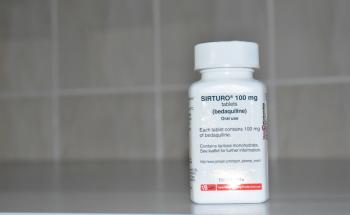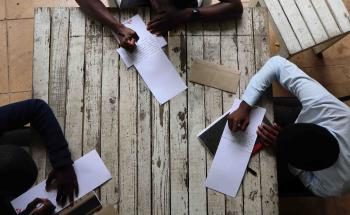As the 27th United Nations Conference of the Parties (COP27) kicks off in Sharm-el-Sheik in Egypt, a prior African host - the South African city of Durban, which hosted the 13th COP - is reeling from an unprecedented natural disaster linked to climate change. As a member of the C40 Cities Network, a group of cities working to drive faster action on climate change, Durban released its first Climate Action Plan in 2020, outlining strategies to green its energy, cut flood risk and conserve water.
However, the 2022 flash floods exposed just how vulnerable Durban remains. In an attempt to provide the eThekwini Municipality with an alternative to piped drinking water and to improve the city's resilience in the face of future flooding events, MSF set out to demonstrate how to draw high-quality water from boreholes in a sustainable way, using geological surveys, sophisticated diagnostic equipment, and community engagement. This case study demonstrates MSF’s adaptive response to disasters resulting in part due to climate change.
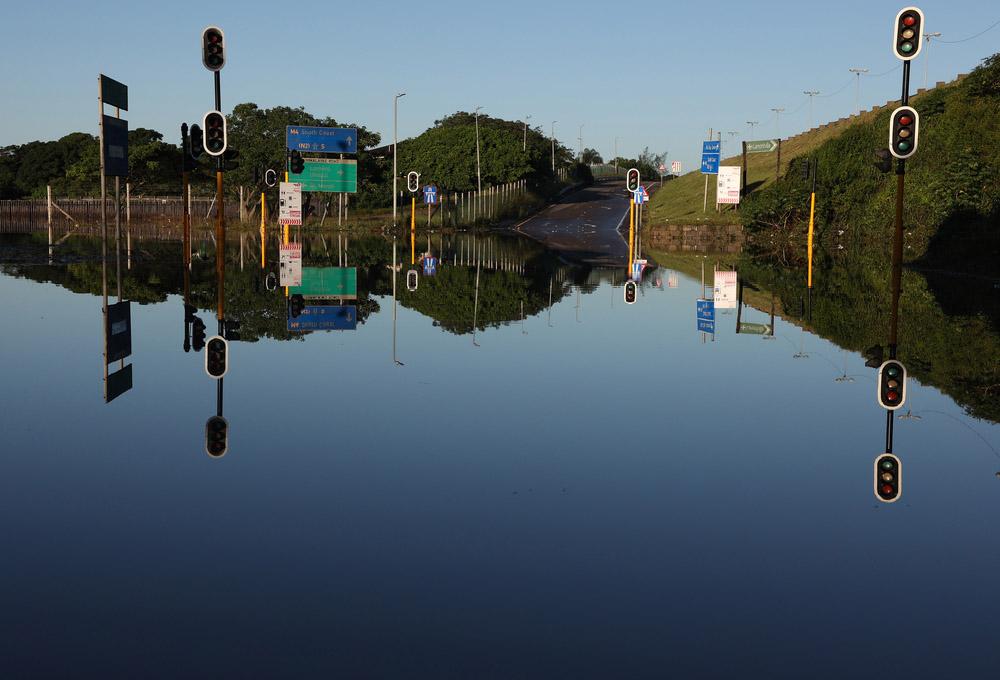
Exactly a month after the April 11 flash floods in KwaZulu-Natal, a group of men and women met beside a small river at the southern end of Tongaat to discuss the town’s water problem. The floodwaters had destroyed the waterworks, and early estimates had put the rebuild at between five to six months. Unless alternatives could be found, water would continue to be trucked in from distant depots for the entirety of this time at enormous cost. What might those alternative solutions be?
The group, comprising community leaders and bureaucrats, NGO representatives and water technicians, had met to discuss a specific possibility – the treatment of surface water, whether from local rivers, dams or both. A private company had already established a pre-manufactured water treatment facility on the foundations of a ruined home beside the Brake Village stream. A pipe, like a mosquito’s proboscis, sucked water from a metal drum set in the middle of the stream, and this was then treated using sand filtration, assisted by coagulation and flocculation. Would the addition of a second, and perhaps even a third water treatment plant, help slake the town’s thirst?
Instead of drilling lots of additional boreholes, we felt the more meaningful contribution would be to show, by doing just a few boreholes, that it is possible to get good quality drinking quality in good quantities.Danish M Malik - Regional Environment and Health Coordinator
“I refuse to mark this water potable,” said the technician as he checked the water’s conductivity. “Too high,” he said, shaking his head. The day before, the river had run red with topsoil from upstream construction works near King Shaka airport. Nobody was saying it out loud, but surface water treatment was looking less and less like a viable option, at least at this site.
One person who did not look too surprised was eThekwini municipality water engineer for the area, Ashan Nandal, who explained that the town had been using 15 million litres of treated water a day before the disaster.
“These water treatment units give, what, about 10,000 litres an hour?”
“I’m only getting 6000 at the moment,” the plant operator chipped in.
A drop in the ocean. Chins were stroked.
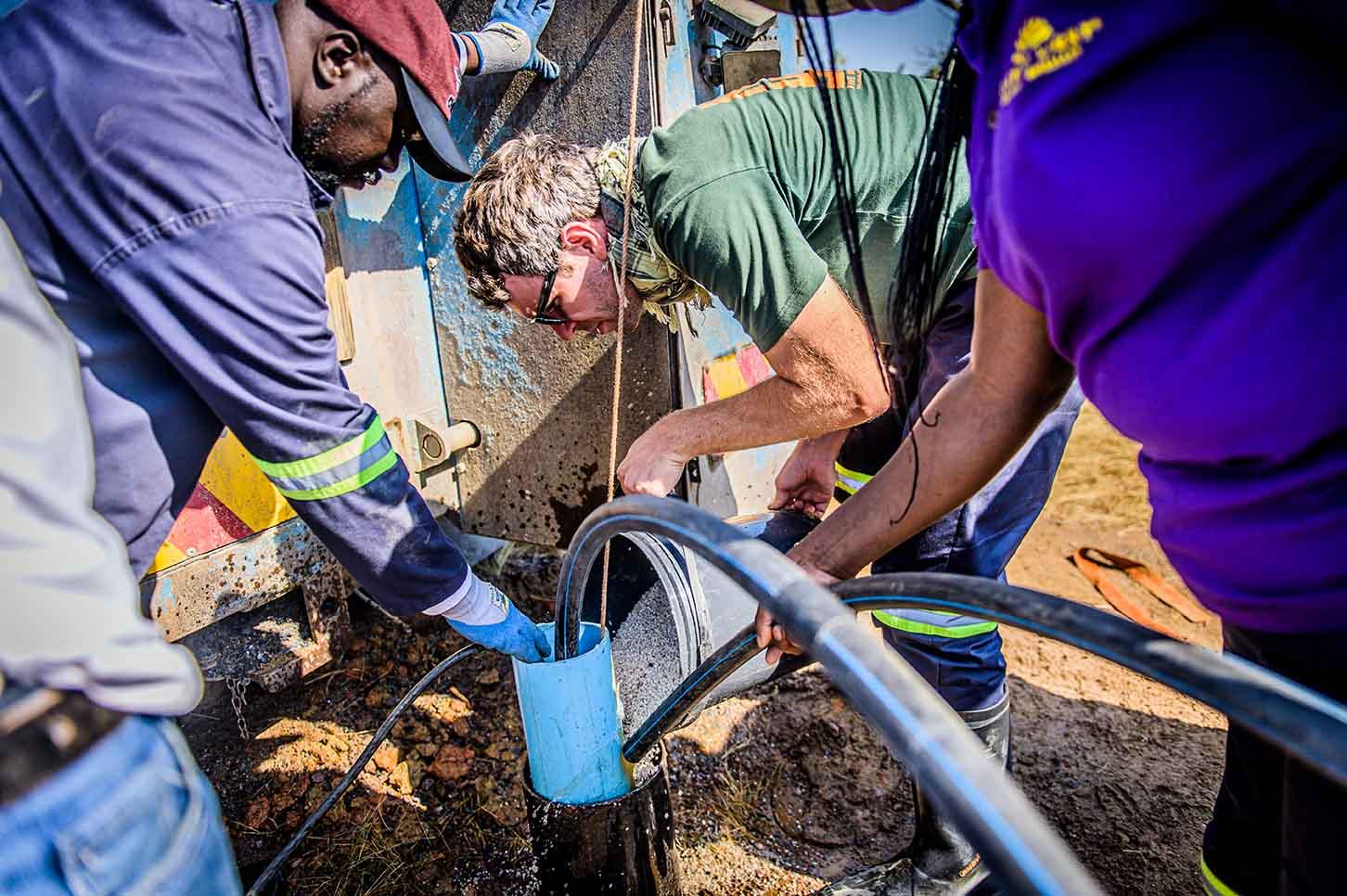
“Of course, it helps, though. Yes, every little bit helps right now,” Nandal said diplomatically, and the meeting broke up with promises of further discussions, although many walked away believing that further investment in surface water treatment would be a waste.
When hydrogeologist Jeremy Lhoir flew into Durban from Portugal to join the emergency response team of Doctors Without Borders (MSF), he sensed that many communities in eThekwini municipality were at boiling point over water.
“You could feel the tension, like something bad will happen if the situation isn’t addressed,” Lhoir recalled, and indeed, there would be volatile water protests in several communities on the KwaZulu-Natal coastline in the ensuing months.
The situation was worrying from a public health perspective, too, as a rising number of people, especially in pre-urban communities, were left with no choice but to draw water from rivers and other surface water sources. The April 11 floods had critically damaged more than a fifth of the municipality’s wastewater pump stations and thousands of kilometres of sewage piping, leading to contamination of rivers and groundwater.
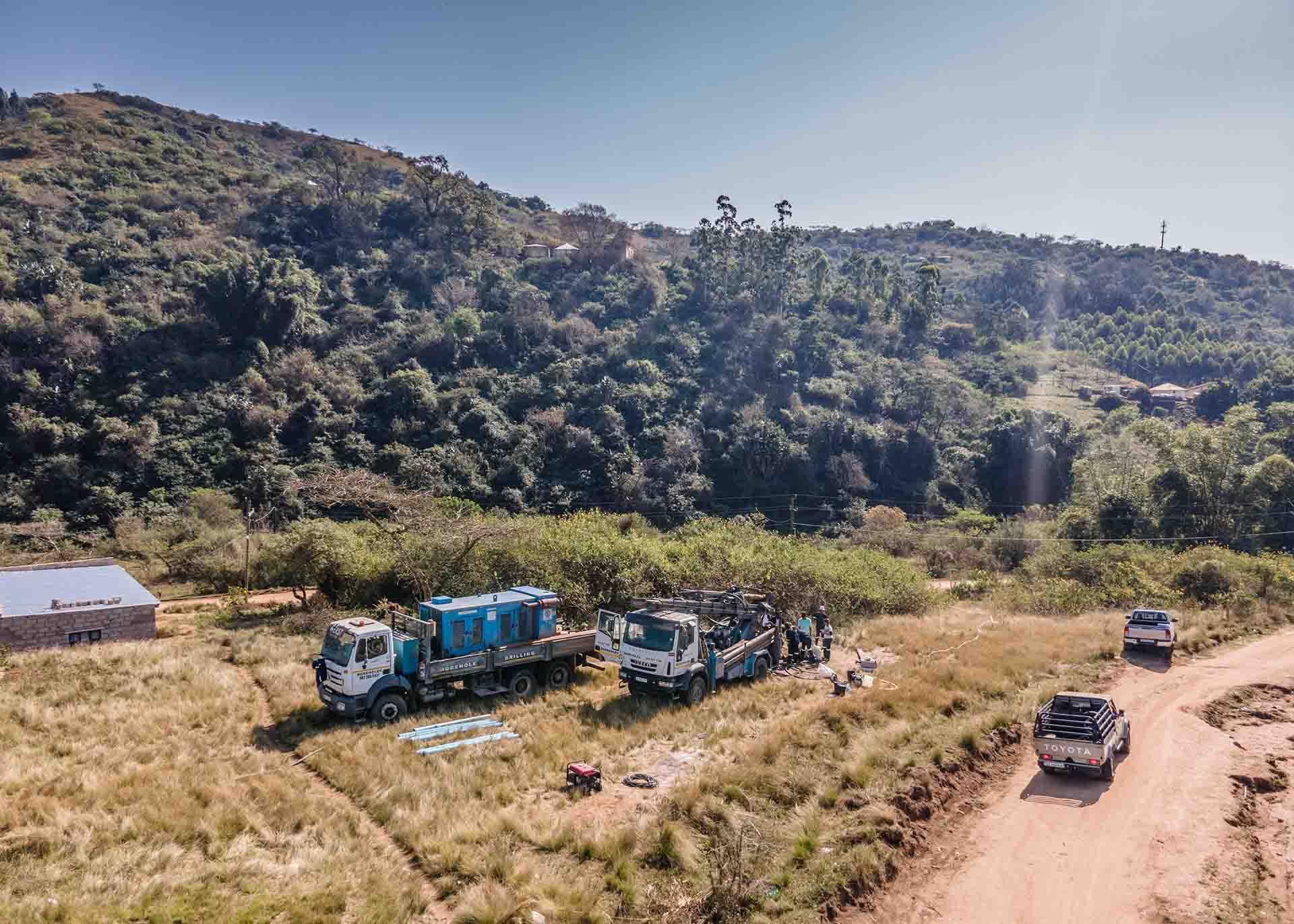
In Tongaat, the roar of borehole drilling rigs became a signature sound.
“NGOs, faith organisations and the municipality itself were all drilling for water, 15 boreholes and counting, but they were punching holes at convenient locations, like in temples and in schools. This makes sense from an ownership and security perspective, but the approach failed to take into account the underlying hydrogeological reality, with the result that pretty much all of these boreholes did not yield good quality water,” said Lhoir.
The coordinator of MSF’s emergency response in Durban, Danish Malik, felt that his team might be able to help by demonstrating a more strategic approach to drilling.
“Instead of drilling lots of additional boreholes, we felt the more meaningful contribution would be to show, by doing just a few boreholes, that it is possible to get good quality drinking quality in good quantities,” said Malik, who wasted no time in bringing in members of the experienced MSF environmental health team, based in Harare, Zimbabwe, where the public water supply is unreliable, and there are recurring outbreaks of cholera and typhoid fever.
Using sophisticated diagnostic equipment, the MSF team in partnership with the eThekwini Water and Sanitation Department, started with an investigation of local hydrogeology in two key but very different areas: namely Tongaat to the north of Durban and Ndwedwe to the north-west.
“We did our homework in both places, consulting experts, reading geological surveys and testing existing boreholes. Two very different pictures began to emerge,” said Lhoir.
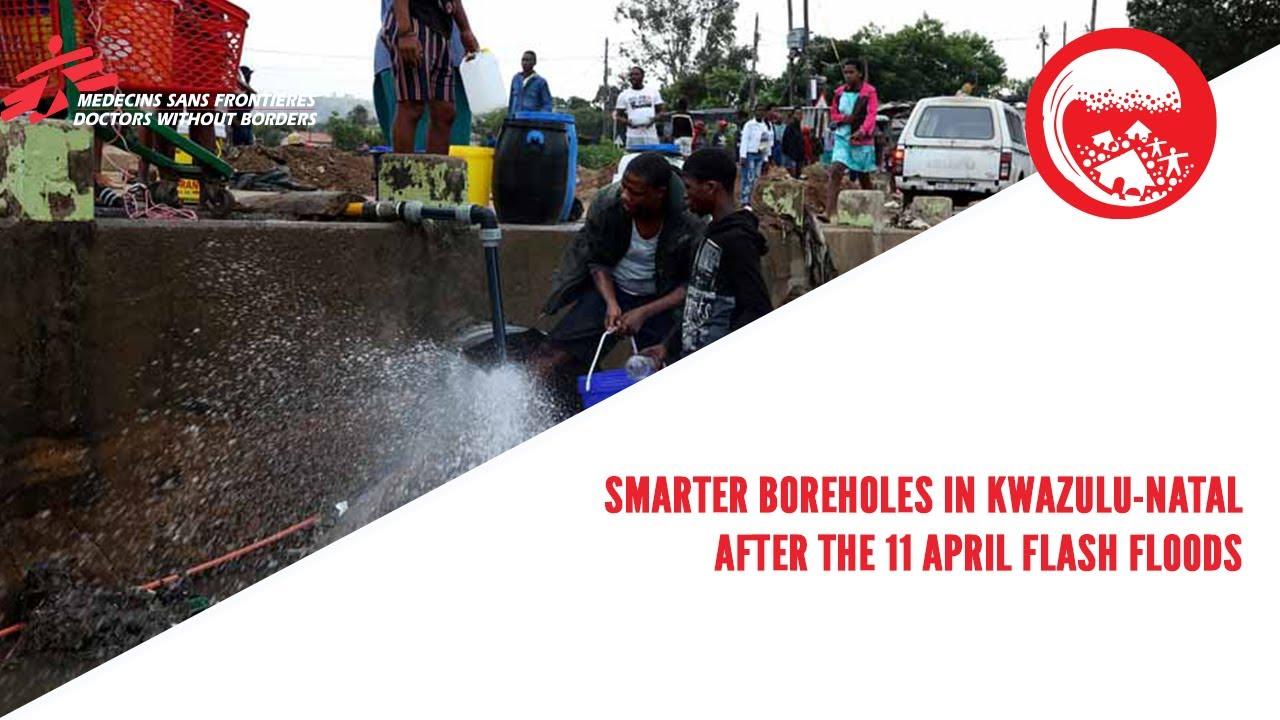
Managing smarter boreholes in Kwa-Zulu Natal after the 11 April flash flood
Striking white gold in Ndwedwe
When an MSF team visited Ndwedwe - 60 kilometres to the northeast of Durban in June - they encountered resident Phumzile Ngcobo walking to fetch water from a nearby stream with her two young children.
“For 7 or 8 years, we’ve received water from trucks on a Sunday, but the trucks haven’t come for four weeks, and when this happens, we must come to the river, which is very far from the home, and the roads are not in good condition,” she said
Ndwedwe’s residents are understandably angry.
“People have come to me to complain. We need boreholes here for times like these. Water is a big crisis in South Africa, not just here,” said Jerusalem Bongukwenza Ngcobo, an induna (traditional leader) under the Qhadi traditional council.
We are happy about this, but what is important now is for the government to drill more boreholes – it will take many to alleviate the problem we face here.Jerusalem Bongukwenza Ngcobo: Induna (Traditional Leader)
Born in 1949, Ngcobo lived much of his life in Ndwedwe under the KwaZulu government, intended as a homeland for the Zulu people and granted partial independence. In the late 1980s and early 90s, before Kwazulu was integrated with Natal Province to form KwaZulu-Natal, Ncgobo said that the authorities started drilling “as many boreholes as possible because they realized the social and political situation was becoming very tense and that water is usually a trigger for those tensions.”
After 1994, the drilling ceased. The community continued to draw water from boreholes for years to come, but yields dwindled, and one by one, the boreholes ceased to function. The community came to depend on trucked water.
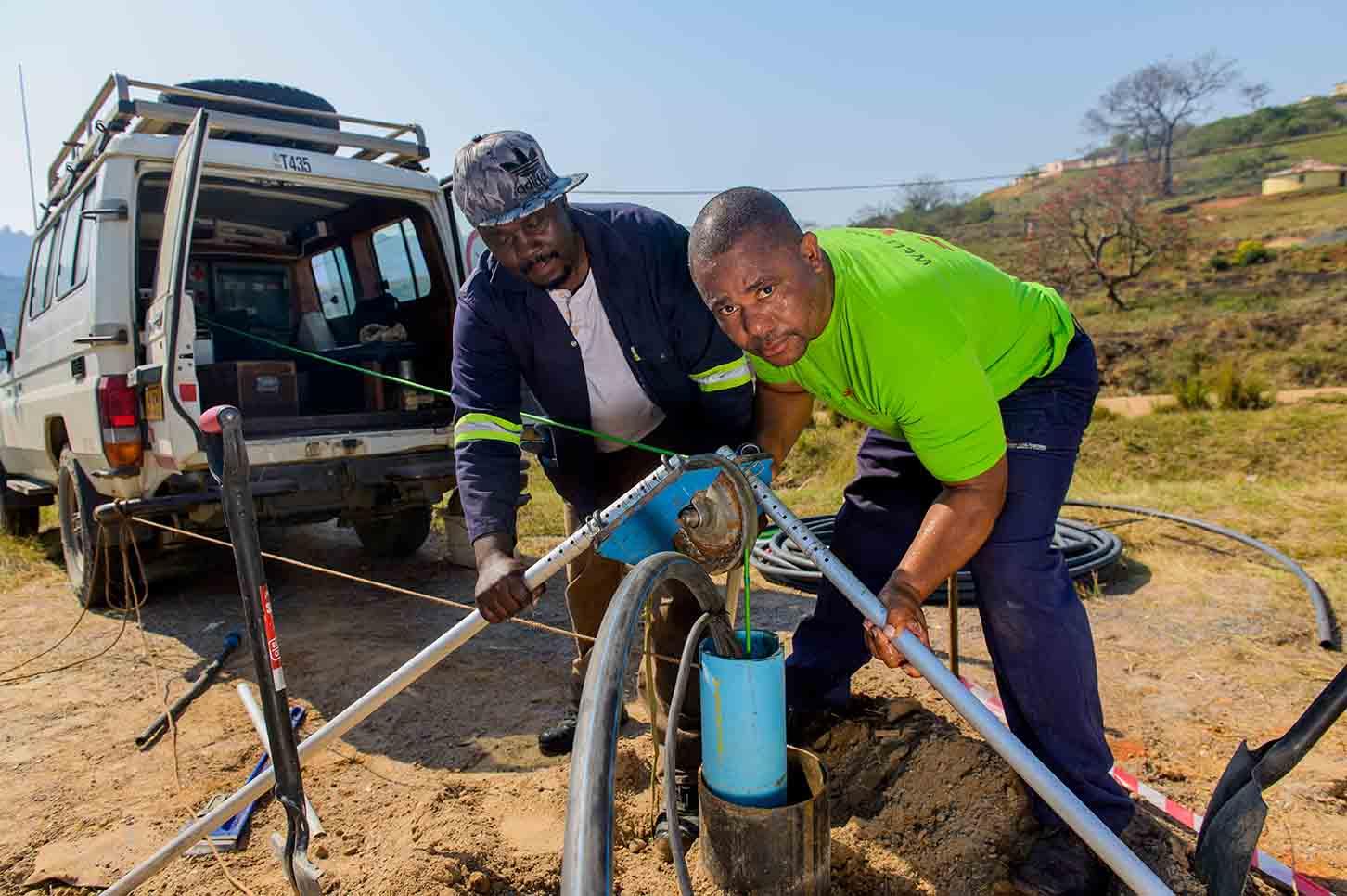
“This makes no sense at all,” said Lhoir, who, along with the MSF team, was able to send a diagnostic probe down some of Ndwedwe’s defunct and ailing boreholes.
According to Lhoir, the overall construction quality of the boreholes was poor.
“From what we observed, we are confident that the issues associated with these boreholes, such as low yields and some bacterial contamination, stem from poor construction and that the groundwater in the area, especially when it can be found in weathered granite formations at deeper depths, is likely to be of a high quality,” he said.
MSF drilled two boreholes in close proximity to the Kwazini river and equipped both with sanitary seals to a depth of 13 meters.
“The sanitary seal is a technique perfected by the MSF team in Zimbabwe, which prevents anthropogenic contamination from entering your well. When you're in a dense urban area or even in a peri-urban place like Ndwedwe, there's often a lot of surface contamination, and the sanitary seal keeps this out. Surprisingly, drillers in the province do not use this and several other techniques that could be described as best practice,” said Malik.
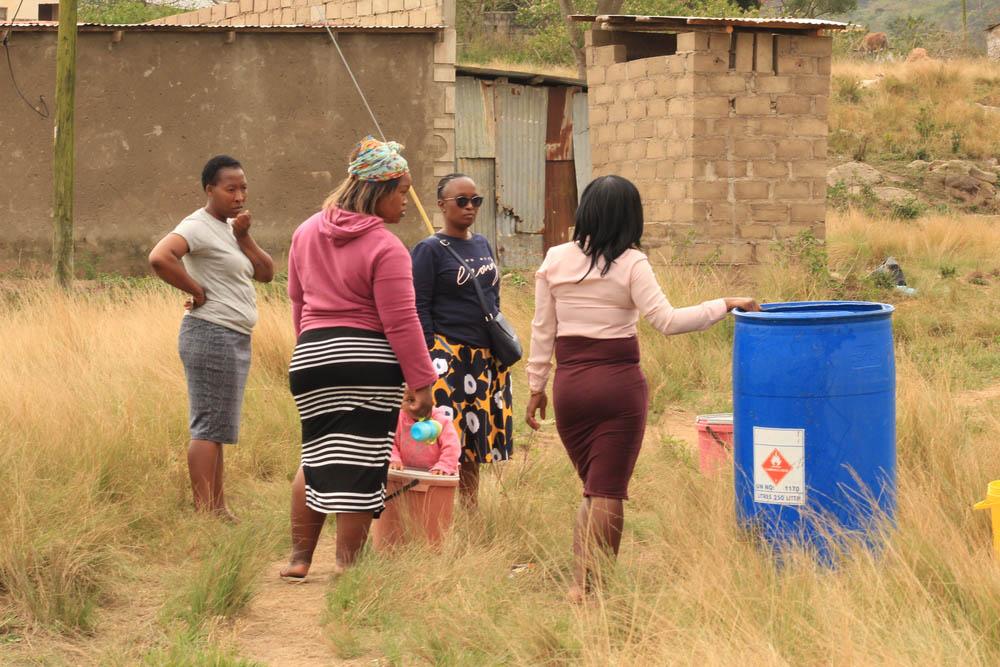
The municipality sent technicians to observe the establishment of the Ndwedwe boreholes, which turned out to be very good, each giving around 4000 litres hourly. Tests show that the water’s chemical parameters are within South Africa’s high standards for drinking water.
“We are happy about this, but what is important now is for the government to drill more boreholes – it will take many to alleviate the problem we face here,” Ngcobo said.
Tongaat’s complicated hydrogeology
In Tongaat, most of the boreholes MSF tested were very new and gave low volumes of quite salty water. For help with understanding the diagnostic data, Lhoir turned to Siphesihle Ndlovu, a hydrogeologist from the University of KwaZulu-Natal’s geology department.
“Tongaat sits above Ecca shale, much of which was formed in a submarine environment, and the rock tends to have salt in it, and so whenever groundwater flows within that shale, it will dissolve some of the rock constituents, giving the water a high concentration of sodium,” Ndlovu explained, adding that drillers tend not to worry overmuch about groundwater quality.
“Once a driller hits the water, the tendency is to consider the job done, regardless of whether the water is of a good quality or fit for the intended purpose,” Ndlovu said.
His advice, with which MSF’s own geohydrologists agreed, was that it would be smarter to drill above the dolerite dykes showing on the area’s geological maps, ideally at the point of contact between dolerite and shale.
“Dolerite is a volcanic rock, and when it intrudes into country rocks like shale, it burns these rocks at the contact point. During cooling, fractures form at the edges of the two types of rock, and these fractures can act as groundwater flow paths, through which groundwater will move faster than it does in the shale or country rock,” Ndlovu explained.
The minerals within dolerite don’t weather as easily as those within the shale formation. The water flowing through does not stay long enough to dissolve some of the constituents within. In theory, drilling into these fractures at the edges of dolerite dykes would result in good yields of high-quality water.
“Unfortunately, most of the dolerite sills in area sit under privately owned sugarcane fields,” said Malik.
MSF did manage to find a small portion of the right rock close to the Mgweni community in Tongaat and proceeded to drill a single borehole to a depth of 142 meters.
“We did not find key fractures in the dolerite as hoped and were therefore unable to find water within the parameters of South Africa’s drinking water standards,” Malik said, although he felt that the diagnostic work MSF did – presenting a clearer picture of Tongaat’s hydrogeology – has hopefully demonstrated that you can’t blindly drill boreholes and expect to alleviate a water crisis.
“There’s a complex world under our feet, and with research and access to diagnostic technology, the odds of getting good yields of quality water rise,” he said.
Community ownership: Key to sustainable boreholes
Many previously drilled boreholes in eThekwini were said to have failed as a result of borehole parts being stolen or vandalized. In Zimbabwe and Malawi, MSF encountered similar concerns and responded by sending health promoters to engage with community residents in regard of water issues.
“Community engagement is key to ensuring the sustainability of boreholes. In Malawi, when MSF drilled boreholes in 2015 after flooding, we engaged the community and those boreholes are still in use,” said Gloria Mambazi, an MSF health promoter.
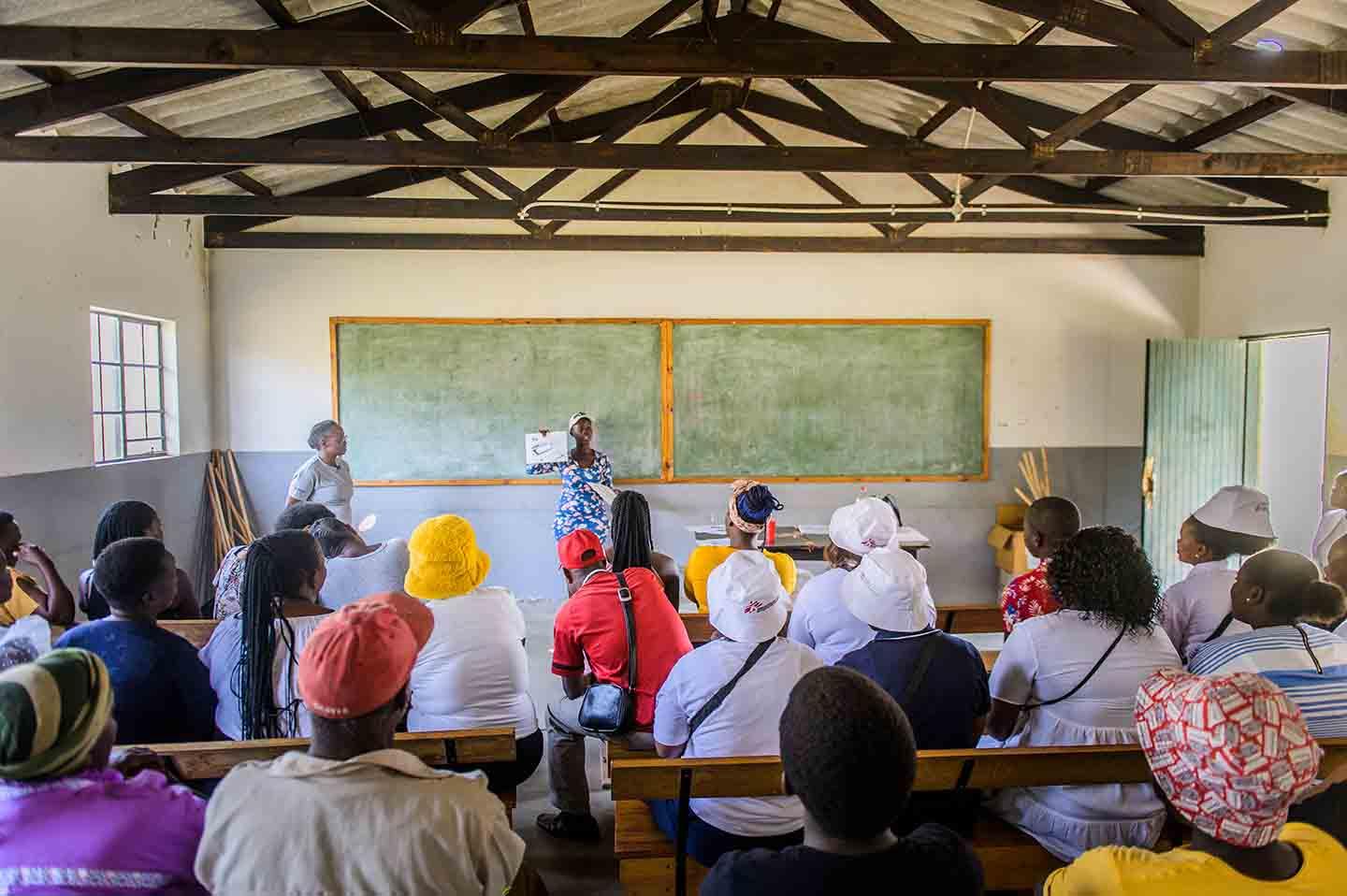
After taking community members and health care workers from the Department of Health through a four-day participatory health and hygiene education training, MSF health promoters worked with local leaders to establish a committee that will be in charge of the boreholes.
“The committee decides on things such as opening hours, and if it’s 6 am until 6 pm the committee needs to ensure that the borehole is opened and closed at those times. If there is a breakdown, somebody needs to be responsible for calling the municipality to come and address it,” Mambazi said.
The boreholes, each equipped with submersible pumps powered by electricity, inline chlorinators, two 10,000 litre water storage tanks, six water distribution taps and a soakaway pit for wastewater drainage, were officially handed over to the community and eThekwini Municipality on 6 September of this year.

